Gardening in spring: cleaning, pruning and planting
There is work in the garden at any time of the year. But in spring there is especially a lot of it, besides, it is so joyful that even fatigue at the end of the working day is pleasant. After all, nature awakens and gives hope for a good harvest, the acquisition of new plants. There the tree should give a harvest for the first year, here a flower of unprecedented beauty, which has been hunted for several years, will bloom. But that will be later. In the meantime, you need to help your dreams come true.
Content:
- Basic work in the spring in the garden
- Rules and features of spring pruning in the garden
- Planting trees and bushes
Basic work in the spring in the garden
With the arrival of spring, each gardener begins to restore "order" in his garden area:
- In the spring, when the snow has not melted yet, but has become porous, you need to trample it in the tree trunk circles. This will prevent mice from settling there. And the aisles need to be cleared as soon as possible. To do this, sprinkle them ash... After the snow melts, the water near the trunk will melt too, but will not run away into the neighboring ravine, but will be absorbed into the aisle. If a crust forms near the trunk, it is carefully removed with a pitchfork. It is not worth sprinkling near-trunk circles with manure mulch over the snow, because then the snow under it will melt much longer, and the tree will be delayed in development.
- By spring, the branches of young trees should already be whitewashed with lime. This will protect them from sunburn and destroy pests... It makes no sense to whitewash "for the May holidays", because by this time the branches are already covered with foliage.
- Conifers also suffer from sunburn. They need to be shaded. Perennial flowers, especially biennials of the second year of life, are not happy with the bright sun and sudden changes in temperature. Their roots are often exposed. Before the onset of heat, they are covered with snow or mulched with humus, then transplanted.
- Wounds from saws, frost, and damage by rodents are covered with garden varnish.
- They collect garbage, broken branches, and the remnants of leaves applied during the winter. Rake comb strawberries... They will tear off the extra mustache that has grown out of place. Remove all old leaves.
- All shelters are removed: from grapes, roses and other plants. If the temperature has risen well above zero and the shelters are not removed, the roots may rot.
- The grapes are allowed to dry and placed on a support. Roses are examined carefully and repeatedly. First, prune them, ruthlessly removing all branches with dark spots. Cut off below the spot. Root shoots are removed so that the rose hips do not drown the varietal branches.
- Chrysanthemumsthat were stored in the cellar are brought out into the light so that they do not stretch out in the dark. Check the condition of dahlias, gladioli. You can install them while germinating in sawdust.
- They inspect the lawns. If necessary, sow lawn grass, having previously mixed it with the ground. You need to sow "in the mud" and water regularly. They comb the lawns with a rake carefully so as not to pull out the roots of the blades. The earth must be dry. There should be no footprints on the lawn.
- In the spring they spend vaccination trees. Clothespins are harvested in the fall and stored in the cellar. The timing may vary depending on the type of tree and the method of grafting.
- Fertilize plants. Use humus for this, compost, mineral fertilizers... They are buried in the soil in the fall, and in the spring it is advised to leave them as compost.But you need to make it after the soil has thawed and warmed up.
- Trees and shrubs are processed from sawflies, aphids, and other pests that reduce the yield. You can use nitrophen (before bud break). Silkworm clutches are removed. Of the diseases, the most harmful are moniliosis, scab, coccomycosis. Trees are treated with preparations containing copper.
- Seeds are sown that have undergone stratification in the cellar. But this is done after the air temperature becomes high enough.
Rules and features of spring pruning in the garden
The formation of the crown of trees and bushes begins in winter, through the snow, as soon as the threat of severe frosts has passed. The time it takes to trim trees depends not only on the area of the garden and the number of trees in it, but also on how the crowns of trees are formed correctly at a young age.
If the gardener followed all the pruning rules, then in the spring you only need to adjust the process.
The tops that remained after the summer are removed. Of course, it is better to break them off at the beginning of summer, while they are still soft and not lignified. Broken, frost-damaged or diseased branches are removed. Cut into the ring those that grow inside the crown or rub against adjacent branches. Most often these are tops that have not been noticed before.
Pruning tips:
- Grape best pruned in the fall. But if you didn't manage to do this, you need to hurry before the sap flow begins. Of course, he will "cry" a little, but it is still better than leaving the bush uncut. All last year's lashes are cut into three buds.
- Raspberries and blackberry best pruned in spring. But there is no fundamental difference for her. Cropped depending on the type. Varieties that bear fruit once are cut to a height of 1.2 m, and with a tree-like crown by 1.5 m. Lateral branches are left 20-25 cm long. The remontant can be cut in two ways. If they want to harvest two small crops, they leave the shoots of the last year. To get the maximum yield in the fall, cut the bush completely. Young shoots will be stronger and produce high yields. Dry blackberry stems are removed, last year's are tied up, cut to 1.2-1.5 m. Perhaps some of them will be frozen and will be cut out later.
- Branches currants, the gooseberries are cut by a third of the length of last year's growth. Cut out completely old branches. The branches should remain in the bush for three years (you can count by the number of annual increments).
Planting trees and bushes
Even in winter, seedlings of annual flowers are sown. As soon as the soil dries up, dive viola, carnation, other biennials. At the end of April, young bushes are transplanted from the greenhouse where they were grown last year. New trees and bushes are planted. It is better to prepare pits for this in the fall. But this is rarely done by anyone. Often, seedlings are planted in hastily prepared pits. The soil settles after a while, breaking off the roots. Therefore, it is better not to rush to buy seedlings before the prepared soil settles in the pit. Or buy and store in the cellar for a couple of weeks.
Landing features:
- The size of the pit is of great importance. It can be easily identified by looking at the root of the plant. The pit will be 2 times larger. They dig under tall trees with a diameter and depth of at least 1 m.For grapes and bushes, 60 cm will be enough.
- The topsoil is laid separately. The earth is mixed with rotted manure, ash, a handful organic fertilizers... You need to pay attention to the acidity of the soil. If it is acidic for the tree that will grow there, add slaked lime. A mound is formed at the bottom of the pit. A plant is placed on top of it, the roots are spread along the slopes of the mound. Install one or two pegs. They will support the tree. Carefully cover with prepared soil. They tie up a tree.
- Currant when planting, they are laid at an angle of 45 degrees. BUT gooseberry set vertically.
- Planted trees and bushes are abundantly watered and mulched with rotted manure.Bushes planted in the fall are pruned, leaving up to 4 large buds, from which branches will form later.
- Bushes raspberries planted shallow, because root system she's superficial. Watered, mulched with humus or peat. Then they are cut at a height of 40 cm. This will make it possible for the root system to develop, and the next year to please with the harvest.
- Gladioli, chrysanthemums can be grown as soon as the soil warms up and stops sticking together in the hands. Cannes and dahlias should be planted at the same time as potatoes. Annuals are planted depending on their frost resistance.
If the garden is threatened by recurrent frosts, then you can save the trees with the help of smoke heaps. To do this, last year's leaves are piled up, which are set on fire when the temperature drops. Strawberries can be saved by covering the plants with old newspapers.
More information can be found in the video:




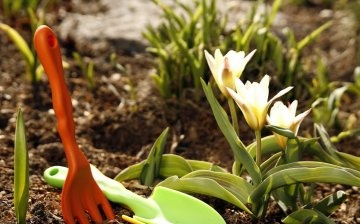
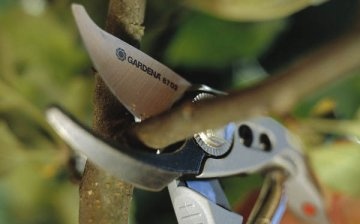
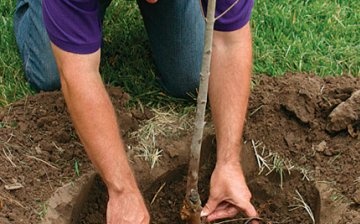




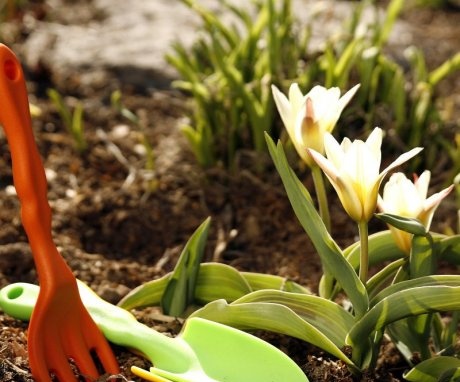

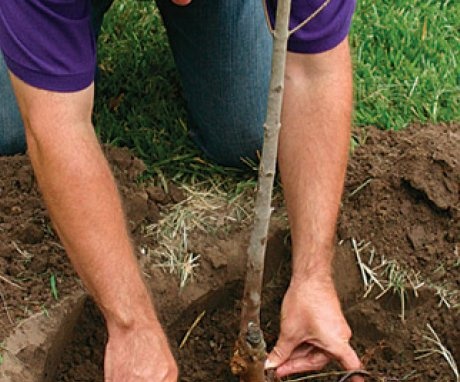
For me, tree pruning is the most difficult, I am usually afraid to harm the tree, so I try to remove only wilted branches, which are already visible that will not bloom and will not turn green.